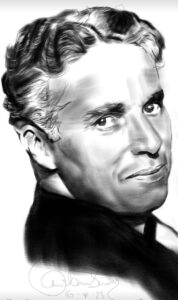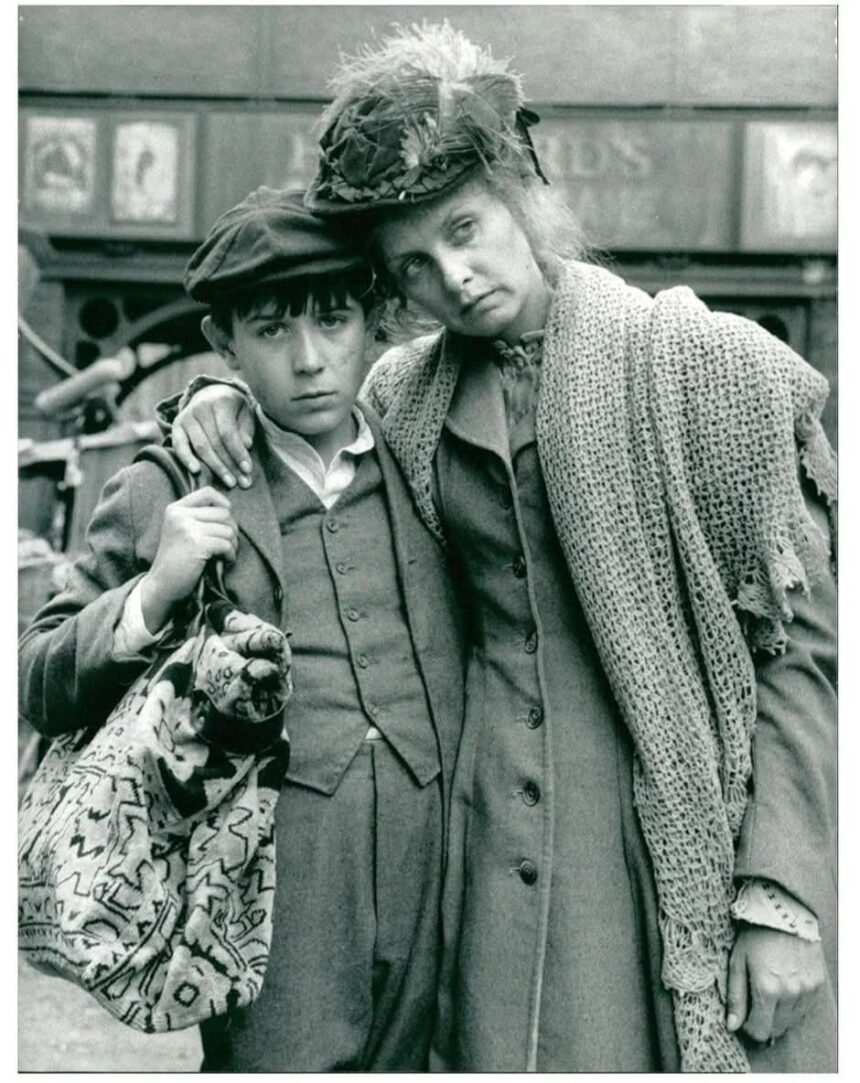NewzVille Nostalgia by Anirban Sadhu
(Anirban Sadhu is a Cinematographer, Painter and Writer. He gives lecture on Cinema in Techno India University, MAKAUT University. Formerly he was a guest faculty at Amity University)
Despite the joy it brought to others, a small man simply couldn’t accept it. It was the time of 1928, one year since Movie turned into Talkie. Tremendous pressure started mounting on him from all sides. “Enough is enough, stop making silent films now, people will throw them away. They have tasted talkies.” But little man was stubborn. He would not make his famous ‘Tramp’ character speak under any circumstances. “The day he speaks, that will be his death,” he would repeatedly tell his friend Ralph Barton.
And in defiance of all these talkies, he decided to make a film. A silent film. Standing against everyone’s combined opposition, little man along with writer Arthur Johnson, wrote the story of the film in six weeks. He decided to compose the music for the film himself. The film was titled ‘City Lights’.
Now you identified the little man. Yes. He was Charles Spencer Chaplin fondly “Charlie Chaplin”. Just as Chaplin was about to start working on the film, his dearest person passed away – his mother, Hannah Chaplin.
Mentally shattered, Chaplin postponed the film’s work by almost three months. He also made slight alterations to the story. He brought in the essence of his father, Charles, into the character of the drunkard, and shaped the blind flower girl in the image of his recently deceased mother, Hannah.

The story was very simple. A wonderfully sweet tale. While wandering around the city, the tramp Chaplin saves a very wealthy man from committing suicide. The man is a terrible alcoholic. In his drunken stupor, he takes Chaplin in as a friend, but the next morning, when he sobers up, he drives him away. This happens almost every day.
Meanwhile, Chaplin meets a blind flower girl. The girl sits on a street corner selling flowers. For some reason, she mistakes Chaplin for a rich man. Chaplin doesn’t correct her mistake. He decides to get money from the wealthy man to restore the girl’s eyesight. The drunkard gives Chaplin the money. Chaplin gives that money for the girl’s eye operation.
When the wealthy man regains consciousness, he naturally doesn’t recognize Chaplin. Chaplin goes to jail. Upon returning from jail, he sees that the girl can now see and has a big flower shop. But she hasn’t seen Chaplin before, so she doesn’t recognize him. Finally, in a poignant twist, the girl realizes that this is the man who gave her a new life.
Chaplin started working on this film in December 1928. The movie was released on 31 January, 1931. The filming, which lasted for almost three years, was a unique record in Chaplin’s life. He had never spent so long shooting any film before. But why did it take so long in this case? That’s our story. It’s astonishing to hear that within these three years, Chaplin spent more than a year shooting just one scene of the film – a scene that lasts less than a minute on screen.
Let me explain. The scene where the flower girl sitting by the roadside mistakes Chaplin for a rich man was simply not believable to Chaplin himself. Chaplin didn’t use a written screenplay. Ideas would swarm in his head on the shooting spot. Initially, he thought the girl would ask Chaplin to buy a flower. But then he immediately thought, why him specifically? Chaplin had a peculiar habit. Whatever came to his mind, he would immediately capture it on camera, even if he knew it wouldn’t end up in the final film. As a result, the amount of rush prints increased rapidly.
Virginia Cherrill, who played the blind girl, was not an experienced actress. “In a way, it’s good. I teach my actors to act my way. So, if you had learned acting beforehand, you would have had to unlearn it first,” Chaplin would say.
Anyway, as I was saying, he had set his sights on the scene where Chaplin meets the flower girl. “If this scene isn’t believable, the whole movie will be wrong,” he would repeatedly mutter. First, it was decided that Chaplin would walk by, see the girl, ask her for a flower, but the girl would pick up a different flower. As a result, Chaplin would realize she couldn’t see. But how would the girl mistake Chaplin for a rich man? Okay, what if a rich man bought flowers before Chaplin… and then Chaplin. No, that doesn’t work either. Chaplin became restless. He kept taking the same shot over and over again, shaking his head.
The perfectionist Chaplin couldn’t think of any other scene. Annoyed, Chaplin started getting angry with everyone. Suddenly, an idea struck him. First, a rich man would buy flowers from the girl. Then Chaplin would buy a flower from her with his last penny – the girl would think the same rich man had returned. But Chaplin cancelled the shot immediately after filming. Day after day, month after month, shooting remained stalled.
Chaplin wasn’t getting any ideas. Virginia Cherrill said in an interview, “We would come to the set. There would be no shooting. Chaplin wouldn’t come. So, all we could do was sit and read books or knit all day.” Due to excessive worry, Chaplin’s physical condition deteriorated. He fell ill. In the first 82 days of the schedule, only 21 days of shooting took place – and even those were cancelled by Chaplin.
On 02 April, 1929, Chaplin recovered and went back to the flower-giving scene. Shooting of that scene began again. 341 takes were shot that day. But even then, the real magic – the girl mistaking Chaplin for a rich man – remained elusive. Annoyed, Chaplin decided he wouldn’t make the movie anymore. 534 days of the shooting schedule had passed, but only 166 days of work had been done. For 368 days, the entire unit sat at the location – Chaplin didn’t come.
Suddenly, one night, Chaplin woke up in the middle of the night, shouting, “The sound of a car door! This is the only way the girl will understand Chaplin is rich!” That is, the girl is sitting on the street corner. An expensive car will stop in front of her. A wealthy man will get out, open the door, and then slam it shut. The girl will understand that a rich customer has arrived. She will ask him to take flowers. But she will find Chaplin in front of her. Immediately, everyone was called and told to come to the shooting spot early in the morning.
After several hundred more takes, when Chaplin finally said “Okay,” everyone was exhausted – but one of the best scenes in world cinema was born.
The tramp Chaplin is walking along the road. He is about to step onto the sidewalk when a bunch of cars block his way. In the midst of this, Chaplin opens the door of an empty car on one side and comes out through the other door. He slams the door shut. The girl with flowers is right in front of him. Mistaking Chaplin for a rich man, she asks him to buy flowers.
Chaplin chooses a different flower. The flower falls to the ground from his hand. Chaplin bends down to pick it up. The girl continues to grope on the ground. Chaplin realizes she is blind. He takes her hand and helps her up. The girl puts the flower in Chaplin’s coat buttonhole.
Chaplin puts his last penny in her hand. Just then, the owner of the car gets in and closes the door. The car drives away. The girl turns towards it and says, “Sir, your change…” Now the tramp Chaplin understands that the girl has mistaken him for a rich man. He tiptoes away.
Yes, that was Chaplin. He would put his heart and soul into making even a few seconds of a scene on screen believable, even knowing that the audience might not pay that much attention. Because he once said, “Comedy is really a serious business,” and who knew that better than him!





